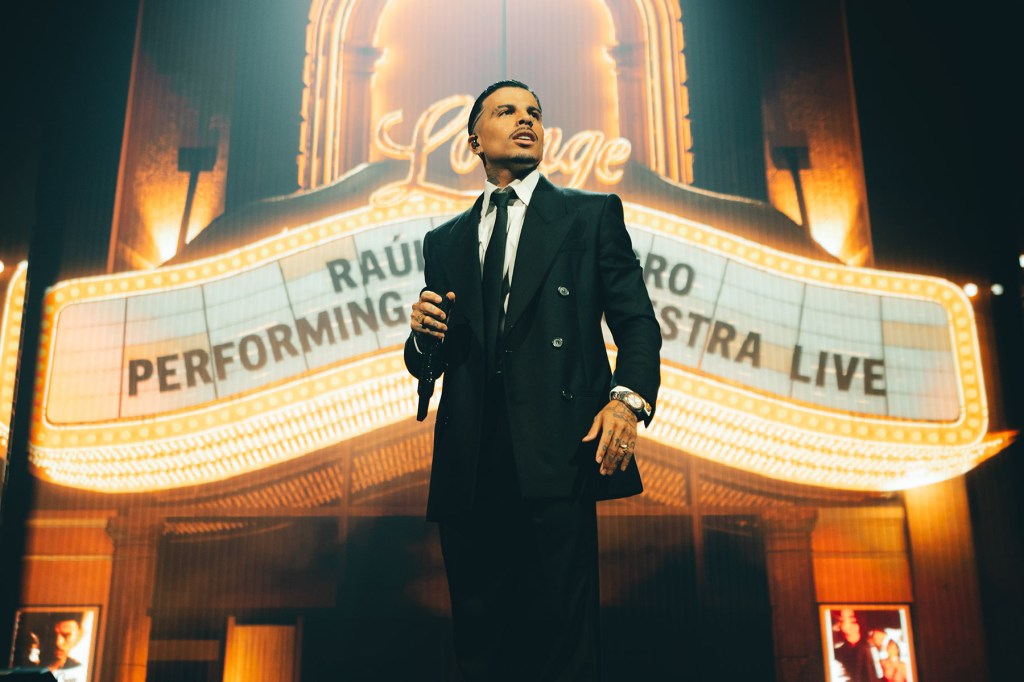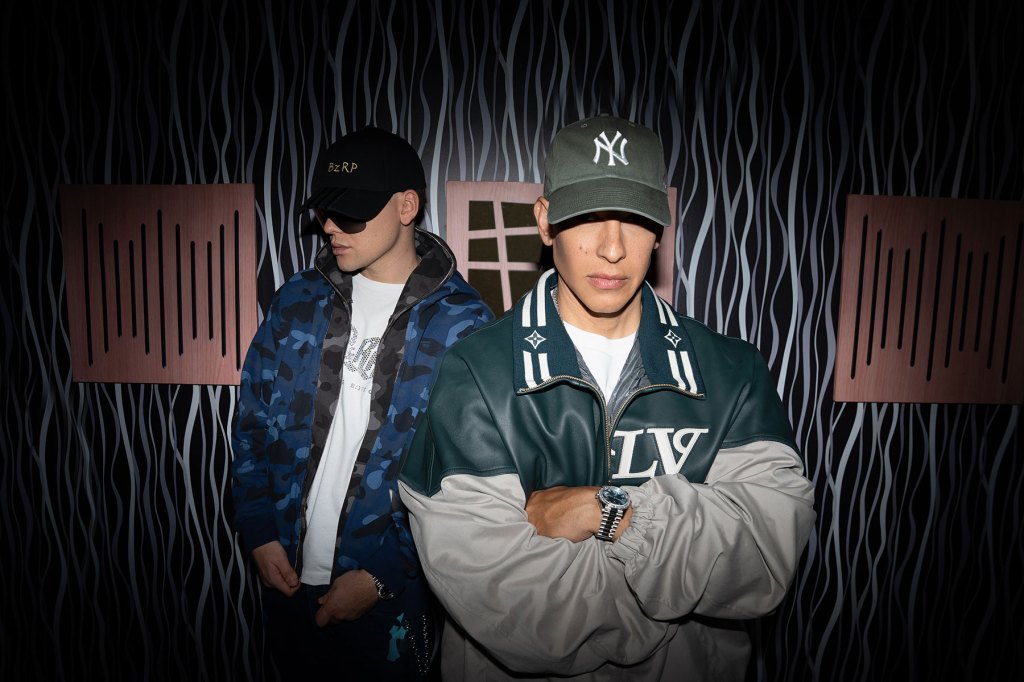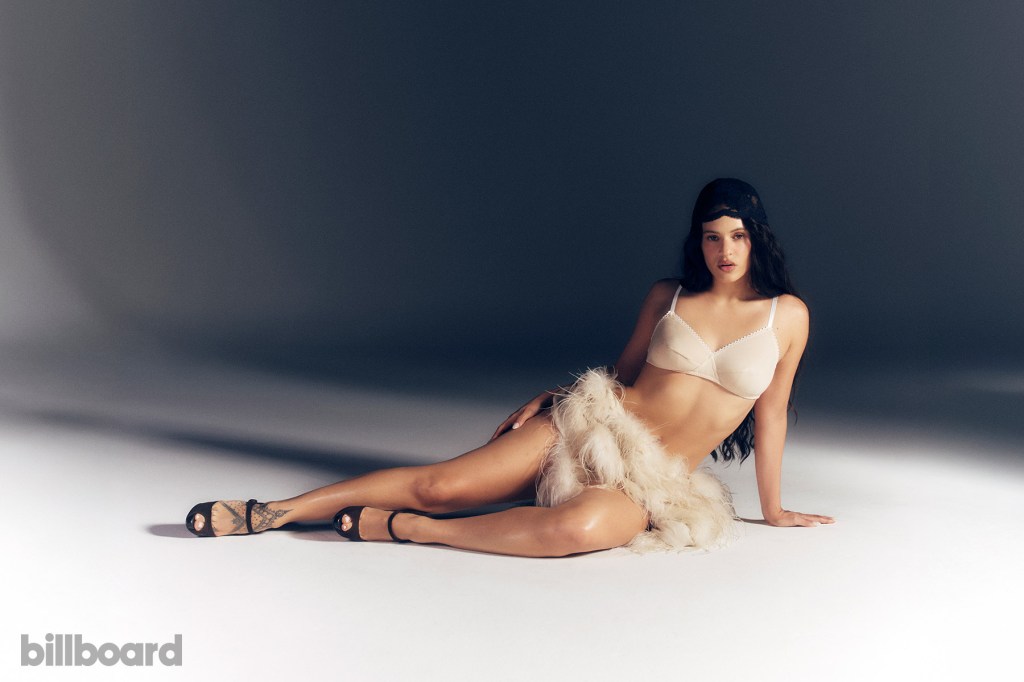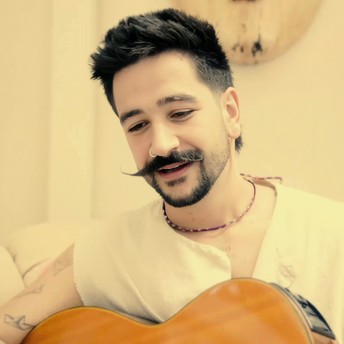Latin
Page: 7
Trending on Billboard
After playing games in such countries as Brazil, Germany and Mexico, the NFL is headed to Spain for the first time, where the Washington Commanders and the Miami Dolphins will face each other at Bernabéu Stadium in Madrid Nov. 16. But for music fans, the real face-off will be between Argentine DJ and producer Bizarrap and Puerto Rican star Daddy Yankee.
Explore
See latest videos, charts and news
Fresh on the heels of yesterday’s release of their “BZRP Music Sessions #0/66,” the pair will perform the track live for the first time at the NFL game in the Spanish capital.
Bizarrap is known for his hit “BZRP Sessions” with top Latin artists, each one tailored to the sound and lyrics of each guest. They include sessions with the likes of Spaniard Quevedo, Puerto Rico’s Rauw Alejandro and “Shakira: Bzrp Music Sessions, Vol 55/66” with Shakira, with its now iconic line “Las mujeres ya no lloran,” which in turn gave name to Shakira’s current tour.
At the NFL halftime show, In addition to the session with Daddy Yankee, Bizarrap will also perform some of his biggest hits.
“Getting the opportunity to headline the halftime show for the NFL’s first game in Spain is a huge honor,” said Bizarrap in a statement. “Especially alongside Daddy Yankee, such a legend”.
“I am really looking forward to performing onstage again with the incredibly talented Bizarrap,” said Daddy Yankee. “I feel so joyful about music and the amazing track we have created together – sharing it with fans around the world has already been so rewarding. Get ready Madrid, get ready NFL, we are going to have an amazing show!”
The NLF’s Madrid game and halftime show follows a September game between the Kansas City Chiefs and the Los Angeles charters played in São Paulo, Brazil, with a halftime show featuring Karol G.
“Across performances at our international games, we’ve elevated Latin artists around the world – showcasing the significance and appeal of the genre globally,” said in a statement Tim Tubito, senior director, global game presentation and entertainment at the NFL. “We’re thrilled to welcome Bizarrap and Daddy Yankee to our first-ever game in Madrid and can’t wait for fans to witness history, including the inaugural performance of the ‘BZRP Music Sessions #0/66’ and a pregame lineup of inspirational talent.”
That pregame lineup includes the Madrid Marine Infantry Group Band playing Spain’s national anthem and Madrid-based vocalist Karina Pasian performing the U.S. National Anthem.
Fans in Spain can tune-in to the Commanders-Dolphins game on Mediaset España’s free-to-air channel Cuatro or on DAZN. Fans in the U.S. can watch the game on NFL Network.
Trending on Billboard Ten months after unleashing his last of many star-studded music sessions, Bizarrap returns with Daddy Yankee in tow for a new “BZRP Music Session.” Titled “BZRP Music Sessions #0/66”— which can easily be interpreted as the first of 66 brand new sessions — the collaboration between the Argentine hitmaker and Puerto Rican […]

Trending on Billboard
Rauw Alejandro turned his acclaimed Cosa Nuestra Tour into a heartfelt tribute to Mexico and its most famous festivity, Día de Muertos (Day of the Dead), on Tuesday night when the Puerto Rican star, his dancers and musicians all appeared with their faces painted as Mexican skulls for the first of five shows at the Palacio de los Deportes in the capital city.
In a stunning surprise for the 18,000 attendees who packed the venue, according to Ocesa figures, Rauw, elegantly dressed in a 1960s-inspired outfit, resembled the character El Catrín — the eternal lover of La Catrina, the legendary skull created by Mexican cartoonist José Guadalupe Posada, who in Mexican tradition is her eternal companion in celebration on life and death.
“I’m singing here in one of my favorite cities,” Rauw said with emotion to the crowd, who erupted in a warm ovation. “Today’s story is a little different, when two cultures become one, when Cosa Nuestra meets Mexico with lots of love and affection, with great respect for everyone.”
The fact that the dancers and musicians accompanying the artist also appeared with their faces painted as Mexican skulls made the experience even more emotional and intimate for his local fans, who, adhering to the singer’s dress code, wore short sequined dresses, feathers, berets, and classic-cut suits.
Día de Muertos is traditionally celebrated on Nov. 1-2. Over the weekend, the performer had shared a series of snapshots on his Instagram account, where he and his team appeared with their faces painted as a skulls enjoying traditional tacos and tequila in Mexico, where he has 10 fully sold-out shows scheduled.
The Mexican leg of his Cosa Nuestra World Tour began on Nov. 2 in the northern city of Monterrey and continues in Mexico City with five shows, from Nov. 4 to 9. He will also stop in the city of Guadalajara on Nov. 15 and 16.
Rauw Alejandro participated on Monday (Nov. 3) in the Billboard Live Music Summit 2025 in Los Angeles, where he spoke with Billboard’s Leila Cobo and Hans Schafer, senior vp of global touring at Live Nation, about how his partnership with the entertainment giant helped him create a Broadway-inspired show that could “travel the world.”
The Cosa Nuestra tour is a high-concept, 1970s New York-inspired spectacle supporting Rauw’s 2024 album of the same name, which hit No. 6 on the Billboard 200. The tour grossed $91.7 million across spring and summer legs in North America and Europe before heading to South America and Mexico. The trek will conclude at the end of this month with a five-date residency at San Juan’s Coliseo de Puerto Rico José Miguel Agrelot.

Trending on Billboard Marc Anthony will “definitely” be at the Super Bowl LX to cheer on his friend and fellow hitmaker, Bad Bunny, who is headlining next year’s halftime show. The Puerto Rican salsa star spoke with Rolling Stone about the significance of Bad Bunny’s upcoming Super Bowl performance and some words of advice he’s […]
Trending on Billboard
The Killers, Guns N’ Roses, Tyler, The Creator, and Deftones are set to headline the 14th edition of the Pa’l Norte festival, the massive musical celebration held annually in Monterrey, Mexico. The 2026 lineup, announced on Wednesday (Nov. 5), features other major international acts such as Kygo, Interpol, Halsey, Jackson Wang, Zoé and Grupo Frontera.
Explore
See latest videos, charts and news
The acclaimed festival, founded by Apodaca Group, will take place March 27-29 at Parque Fundidora. Other performers include Los Fabulosos Cadillacs, The Lumineers, Morat, Turnstile, Cuco, 31 Minutos and Omar Courtz, as well as Myke Towers, Simple Plan, Judeline, DJO, The Blaze (DJ Set), Cypress Hill, Purple Disco Machine and Molotov, among many others.
In a statement, organizers announced that ticket sales will begin on Nov. 11 at 2 p.m. local time through Ticketmaster.
In partnership with promoter Ocesa, acquired by Live Nation in 2021, Tecate Pa’l Norte has become one of the largest and most diverse festivals in Mexico. The 2026 edition will feature more than 100 musical acts across eight stages, according to organizers.
The three-day event gathers around 100,000 attendees per day, a few thousand more than the electronic music-focused EDC, one of the most crowded festivals in Mexico. It annually attracts fans from all over the world, with attendance exceeding other major festivals in Mexico City such as Vive Latino and Corona Capital, which gather around 80,000 people per day, according to their organizers.
The festival lineup celebrates a rich fusion of genres ranging from rock and indie to Mexican regional music, reggaeton and electronic music, showcasing some of the biggest international stars. Over the years, Pa’l Norte has established itself as the “most important musical entertainment event in northern Mexico,” according to the Ministry of Tourism of Nuevo León.
Previous editions of the festival have featured acts such as Billie Eilish, Foo Fighters, Muse, Tame Impala, The Killers, Maná, Caifanes, Los Fabulosos Cadillacs and 50 Cent. This year it was headlined by pop superstars Olivia Rodrigo and Justin Timberlake, Charli xcx and Green Day.
Check out the full 2026 Tecate Pa’l Norte lineup below:
Trending on Billboard
As Rosalía readied the release of her anticipated album Lux (out Friday, Nov. 7), the global pop star was also filming for the upcoming third season of Euphoria.
“It was very challenging to do both. I was recording the album and producing and checking mixes, everything, while I was shooting Euphoria,” shares the Billboard cover star. “I had to divide my mind between both, and it was the first time, also, that I was doing something like this — preparing a character, studying lines. These are new things for me. It’s very different from making an album and making music. So that was a real challenge.”
Plus, despite her fame, she still had to audition for a role: “Girl, of course, claro!” But once she landed the part and filming began, she says Euphoria co-star Alexa Demie had the best advice to share. “She’s been a very close friend of mine, and she’s been very supportive. The way she approaches it is so effortless, and that’s something very beautiful to see and very inspiring.”
As for who has the best music taste on staff? “Definitely me,” she says with a laugh, before offering another answer. “Zendaya. Because Zendaya recommended Motomami to the director.”
“When we were filming, I admire her so much, I didn’t want to distract her at all,” continues Rosalía. “So I wouldn’t talk to her too much. But when she would be off set, then she would explain that she knew about my music, and that made me very happy. It meant a lot, because I really like what she does. She can do it all.”
Rosalía can, too. With Euphoria on her resume, she reveals that she would love to work with Quentin Tarantino or Sofia Coppola. But until then — and until the third season of Euphoria finally airs in 2026 — fans can cling to the singer’s fourth album, Lux, and read her full Billboard cover story.
Trending on Billboard Rosalía offers an exasperated laugh as she sits down, having tried on a variety of equally stunning outfits only to end up in the casual clothes she arrived in: black pants and a camo jacket lined with fur. It’s the same jacket she was spotted wearing at a Parisian cafe in early […]
Trending on Billboard The Latin Alternative Music Conference (LAMC) has announced its 2026 dates, Billboard can exclusively announce today (Nov. 5). Following its star-studded 2025 edition that included the participation of artists such as Camilo, Morat, Yami Safdie, Ela Taubert, and Leo Rizzo, among others, the LAMC will return from July 28 to Aug. 1, […]

Trending on Billboard Bizarrap announced his next “BZRP Music Sessions” is with Daddy Yankee. The surprising news was shared in a joint Instagram post between the Argentine hitmaker and reggaetón icon on Tuesday (Nov. 4), alongside a photo of the two artists posing in Biza’s popular studio. “BZRP Music Session #0/66,” reads the caption — […]

Trending on Billboard
Nathy Peluso may not have salsa music in her blood, but she shines with the force of a hurricane on her new traditional salsa EP, Malportada. The Argentine-Spanish artist — best known for her Latin urban, alternative music songs with hints of neo soul and R&B — discovered the tropical genre during her teenage years while buying vinyl records in Madrid. Since then, she says she’s been “hooked.”
“When I started going to vinyl markets, I began buying and researching,” Peluso tells Billboard Español, noting that the first album to make a strong impression on her was Rey Barretto’s Indestructible (1973). “From there, I discovered Fania [Records] and all of its stars.”
Released on Oct. 17 under Sony Music España, Malportada was primarily produced by Peluso, Manuel Lara, and Servando Primera, and has that old-school salsa music sound with contemporary elements. Through six songs, ranging from “A Caballo” and “Insensata” to “Ángel” and “Malportada” with Rawayana, the singer challenges the male-dominated narrative that has historically characterized the genre, showcasing her vocal skills. With her powerful voice and hypnotic interpretative quality, Peluso seems tailor-made for this.
“I feel like I am — it’s a genre that I really enjoy singing. It’s demanding, and I like feeling challenged by what I sing,” says the five-time Latin Grammy winner, noting that she’s also a fan of bolero and ballads. “I think I’ve spent my entire life preparing to sing this album. It wasn’t something I had to suddenly prepare for — it’s something I’ve been training and studying for my whole life, so when the time came to do it, it felt natural, not forced.”
Peluso, who also recently collaborated with Gloria Estefan on the remix of the tropical track “Chirriqui Chirri,” released in September, has been exposed to a variety of rhythms over the years — both Latin and non-Latin. Born in Luján, Argentina, she has said she grew up listening to artists like Ella Fitzgerald, Ray Charles, João Gilberto, and Atahualpa Yupanqui. She emigrated to Spain with her family at the age of 9, first settling in Alicante, a place she says “was full of immigrants at that time,” before moving to Barcelona.
“I was surrounded by so many Latin cultures: Peruvians, Colombians, Dominicans, Ecuadorians, and of course, Argentinians. So I think that’s where Latin music became very natural for me, because when you visit a friend’s house, that music was always playing,” she explains.
As for salsa, she says she’s “a big fan of traditional salsa, especially Puerto Rican salsa. I also love Colombian salsa. I just love salsa in general.” For Malportada, she wanted to explore the different styles of the genre she enjoys consuming, “which is like a more — how do I put it? — a more aggressive, more rap-like salsa, like Juanito Alimaña. That more barrio-style salsa.”
“Then there’s the more romantic salsa, the more melodic Frankie [Ruiz]-style, which doesn’t tell the story of a character as much but rather conveys feelings,” she continues. “And then there’s perhaps the kind of salsa that’s more about lifting people up, more social, like [the track on the EP] ‘Que Lluevan Flores.’”
Nominated again for two Latin Grammys this year — best urban performance/urban fusion for “De Maravisha” with Tokischa, and best urban song for “Xq Eres Así” with Álvaro Díaz — Peluso might appear next year for the first time in tropical music categories with Malportada.
“I hope so,” she says about the idea. “Especially because that always means the music is reaching people. I always interpret it that way, as my peers valuing it, the music world recognizing it. I’d love it, honestly, because [this EP] was made with so much respect and also with the intention of helping and contributing my little grain of sand so that salsa reaches as far as possible.”
Peluso is among the artists confirmed to perform at the 26th edition of the Latin Grammys, which will air live on Thursday, Nov. 13, at 8 p.m. ET/PT from Las Vegas via TelevisaUnivision platforms.

 State Champ Radio
State Champ Radio 




